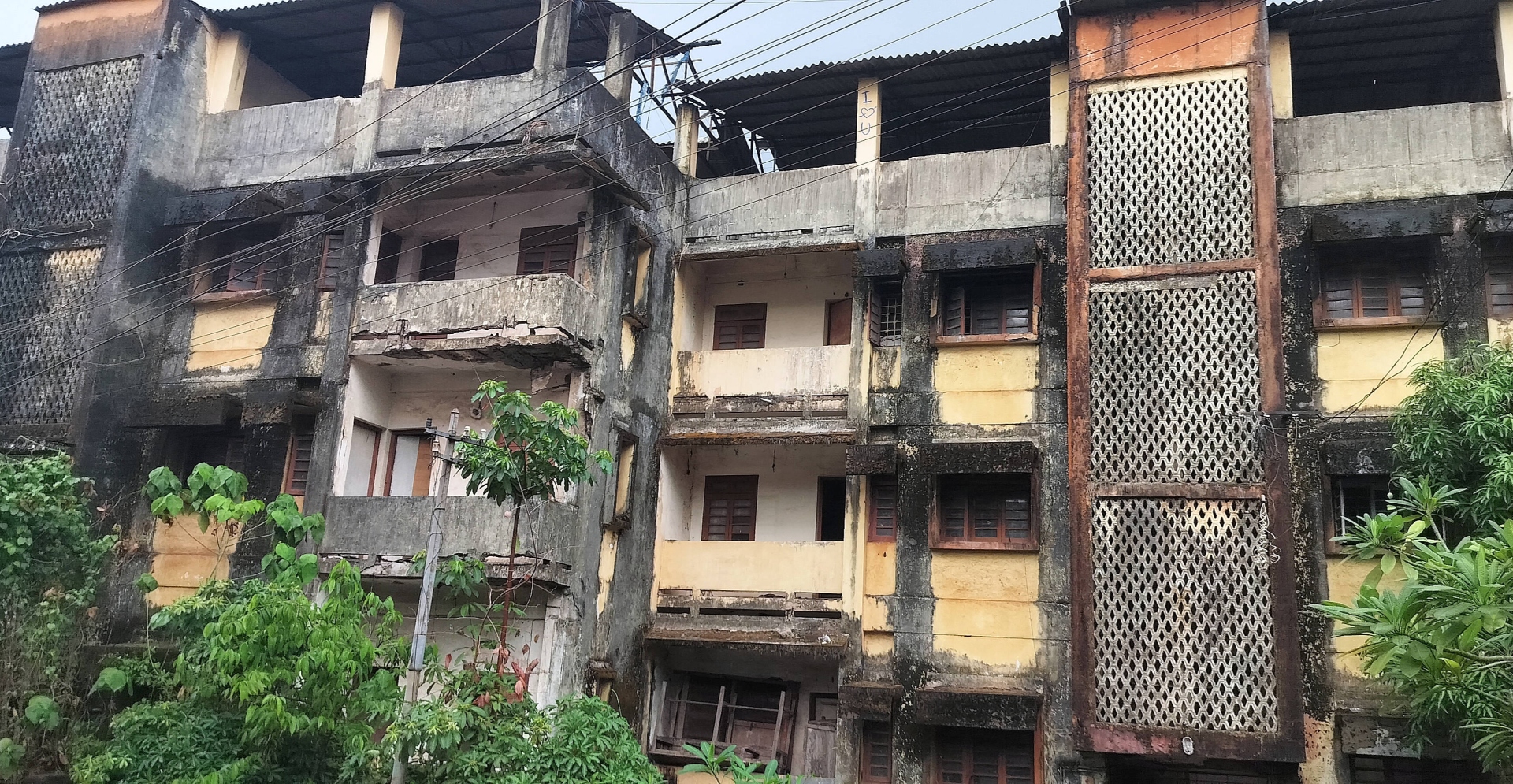
MAPUSA
The Mapusa Municipal Council (MMC) has finally swung into action, demolishing a dangerously dilapidated ancestral house at Ansabhat – an important first step in dealing with unsafe structures in the town.
But this seemingly small victory only scratches the surface of a much bigger and more complex problem.
A looming threat still persists across Mapusa: at least a dozen multi-storied buildings, some housing commercial establishments and government staff, remain in a perilous condition and need urgent attention before disaster strikes.
The house at Ansabhat, near the Krantivaar statue, had long been teetering on the edge of collapse. After years of inaction, the MMC finally moved in to demolish it this week.
However, this isolated demolition has thrown a spotlight on a much broader civic crisis.
A town full of ticking time bombs
Sources within the MMC reveal that there are at least 20 other structures – many of them prominent buildings – deemed unsafe and overdue for either repairs or demolition.
Among them are: Dempo Mansion, home to a nationalised bank, Vaz Corner at Tali-vaddo, Ganga Apartments at Feira Alta, Junta Quarters behind Alankar Theatre, Hotel Safari, opposite the old municipal building, Karekar Building, near the Laxmi Narayan Temple, Old Fajanta Building, Feira Alta, a private house near Remanso Hospital and Asilo Quarters at St Sebastian Vaddo, which still house hospital staff despite deteriorating conditions.
The urgency to address these structures has heightened with the arrival of the monsoon, which increases the risk of collapse, water ingress and electrical hazards. Many locals are living in fear.
“It’s not difficult for the civic authorities to take action. The municipal council should send demolition notices and recover the cost from owners,” said Mahesh Rane, a resident of Khorlim.
His comment echoes a widespread sentiment among residents who believe the council is dragging its feet.
What’s holding the council back?
Though MMC Chairperson Priya Mishal has assured that “nine to ten dilapidated buildings have been identified for action,” actual demolition will only proceed once formal approval is received from the North Goa Collector.
In a town where red tape often moves slower than erosion itself, this conditionality adds a worrying layer of delay.
Part of the problem, officials admit, lies in the complex legal and social dynamics surrounding these buildings.
In many cases, landlords are ready to redevelop or demolish ageing properties. But tenants – fearing eviction, loss of income or simply refusing change – often resist vacating the premises.
These disputes routinely land in court, stalling action for years. In the meantime, the buildings continue to decay, turning into accident zones in waiting.
“There’s a systemic weakness in enforcement. The MMC can issue notices, but rarely follows through unless a structure is literally falling apart. And even then, the process to act is mired in bureaucracy,” a former municipal official shared anonymously.
The road ahead
With monsoon rains already battering Goa, the risk posed by these neglected structures is no longer hypothetical. The MMC’s demolition of the Ansabhat house may be a start, but without a sustained and systematic campaign to tackle all dangerous buildings, the town remains vulnerable to potential tragedy.
Chairperson Priya Mishal’s proactive tone is a welcome shift.
Her acknowledgement of the scale of the problem – pointing to pending permissions – is more transparency than the council has shown in years.